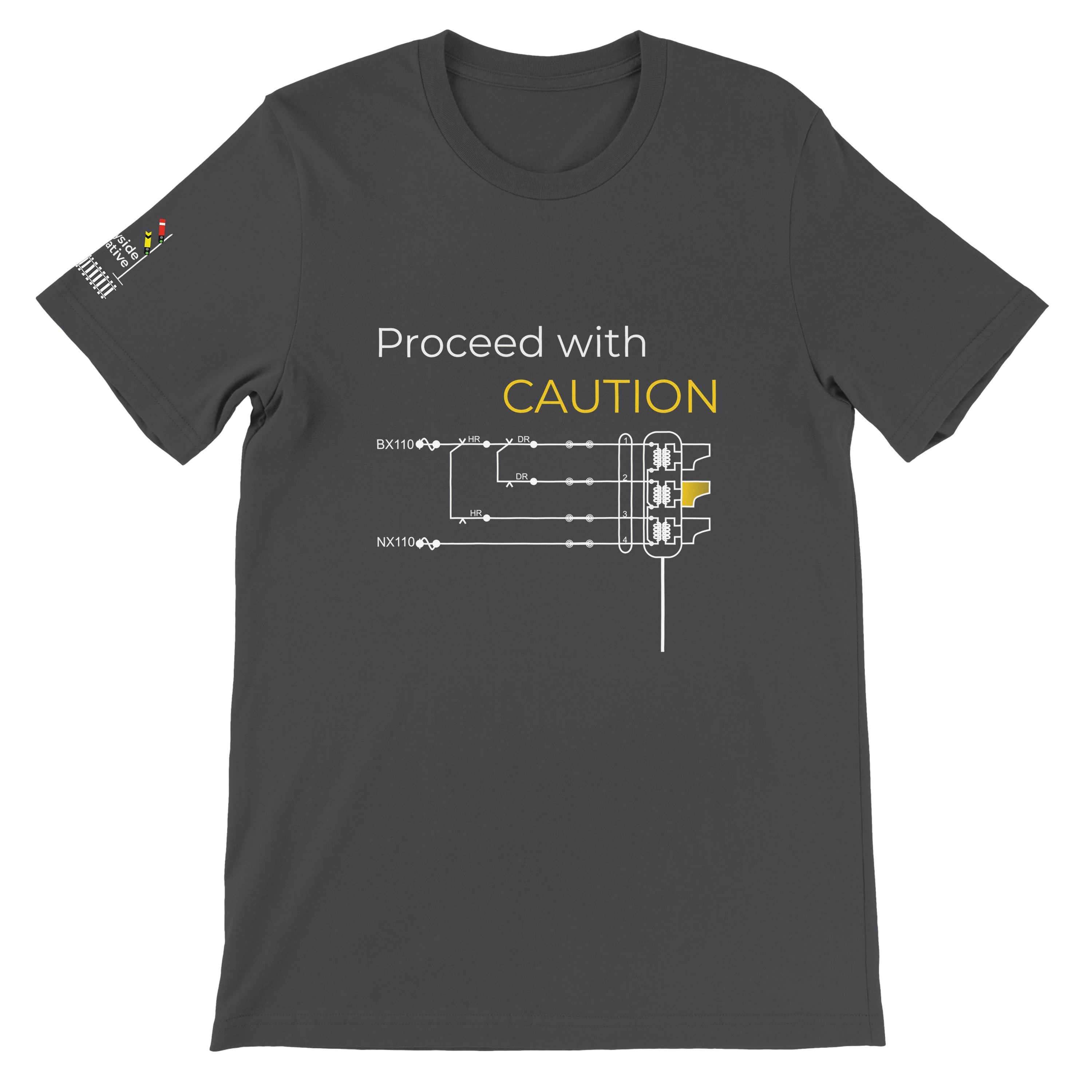
Proceed with caution
This design plays on the fact that the yellow aspect of a tradition 3 colour railway signal is known as the 'caution' aspect. The circuit is a simplification of what would be used in a real network.
In a traditional three-aspect railway signaling system, the caution aspect is represented by the yellow signal. It plays a vital role in ensuring the safe operation of trains by providing advanced warning to the driver about upcoming track conditions.
What Does the Yellow Signal Indicate?
The caution (yellow) signal informs the driver to prepare for a possible stop at the next signal. Essentially, it signifies that the next signal is displaying a red aspect, indicating that the train must come to a halt. This allows the driver to reduce speed gradually and approach the next signal with readiness to stop, rather than braking suddenly.
Importance of the Caution Aspect
- Safety: The yellow signal helps avoid abrupt stops and ensures that the train can decelerate smoothly, reducing risks to passengers and equipment.
- Efficiency: By providing advance notice, the caution aspect aids in maintaining the flow of railway operations, minimizing disruptions and delays.
- Driver Preparedness: It ensures that drivers are aware of conditions ahead, supporting proactive, rather than reactive, driving decisions.